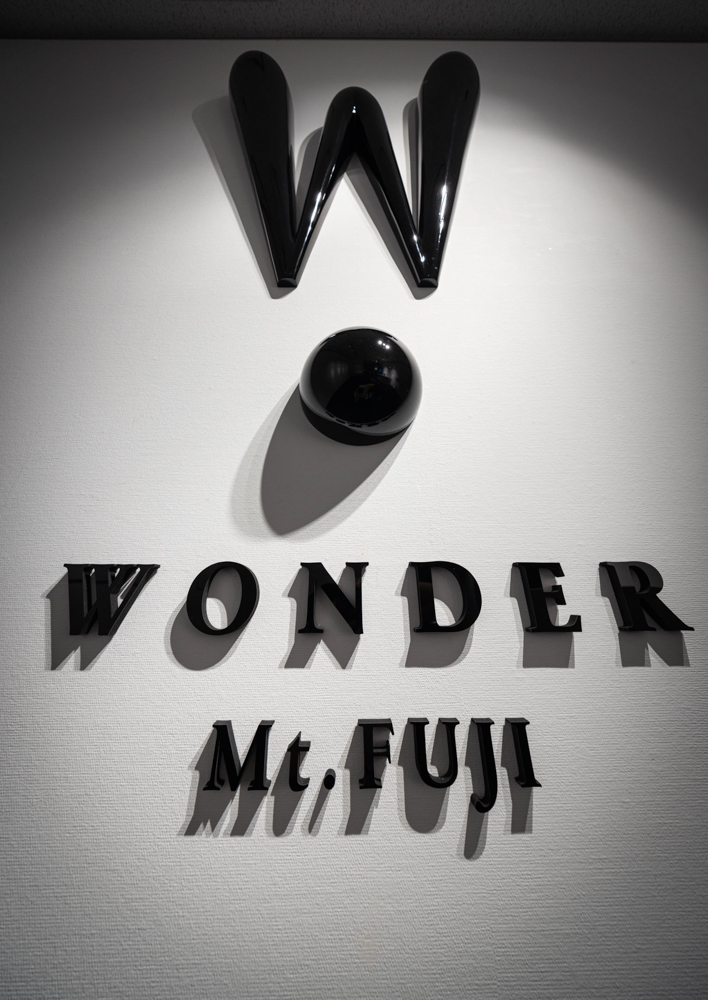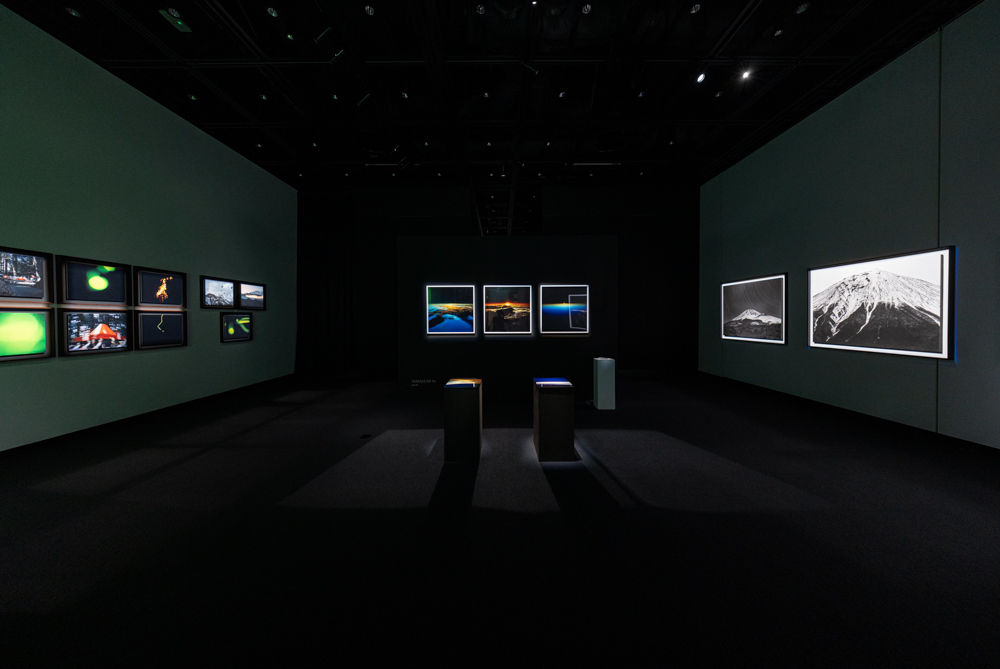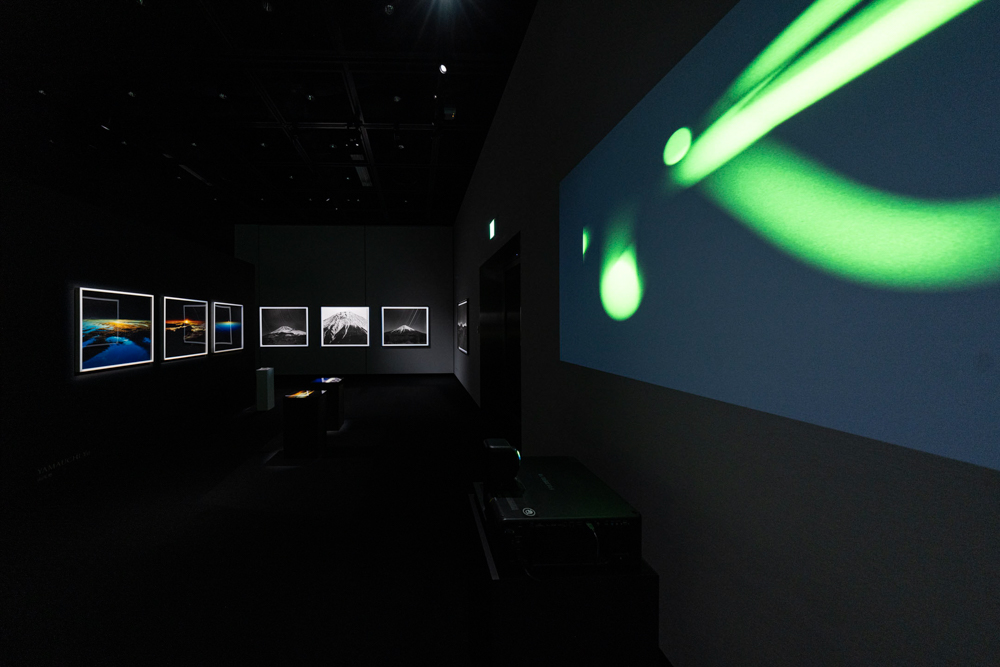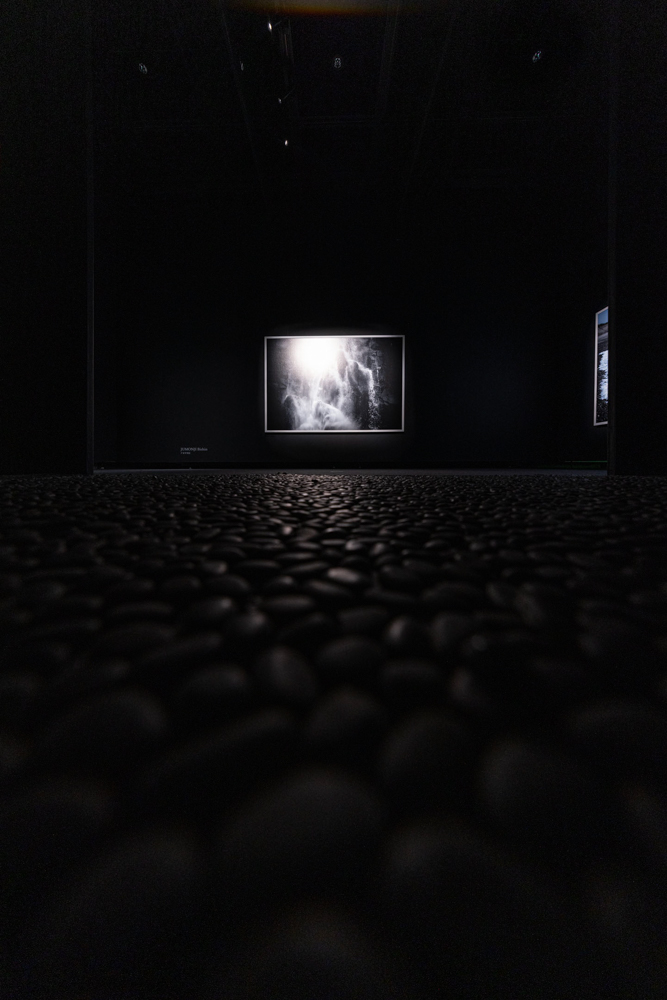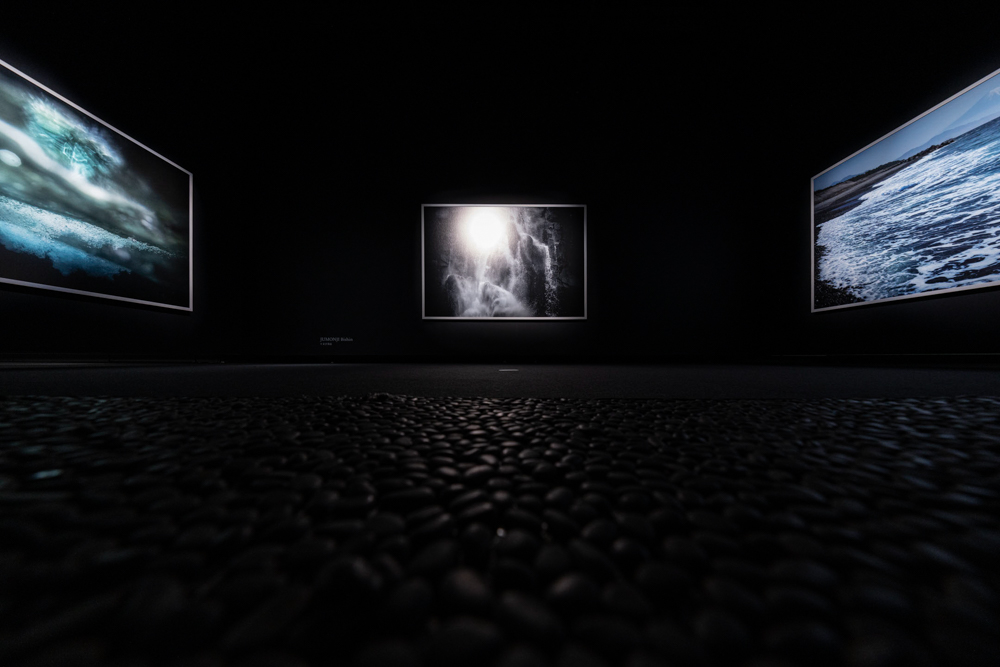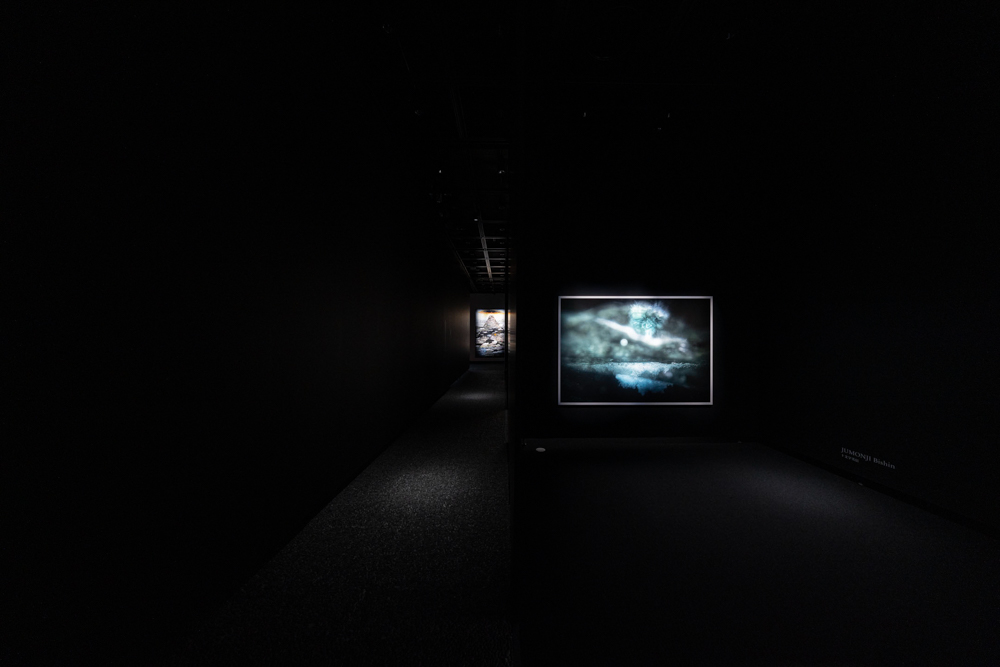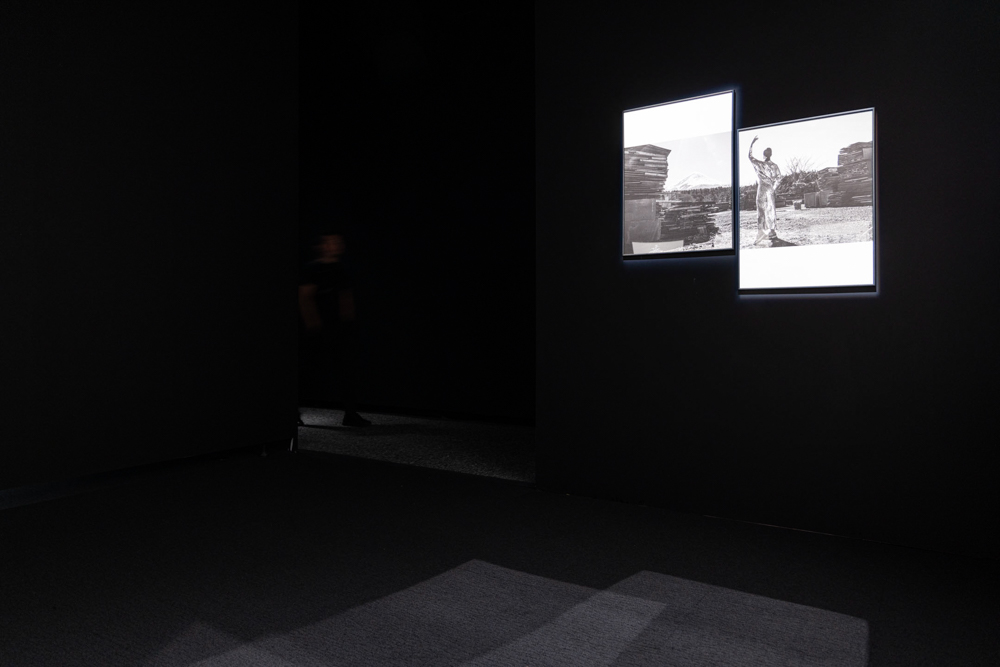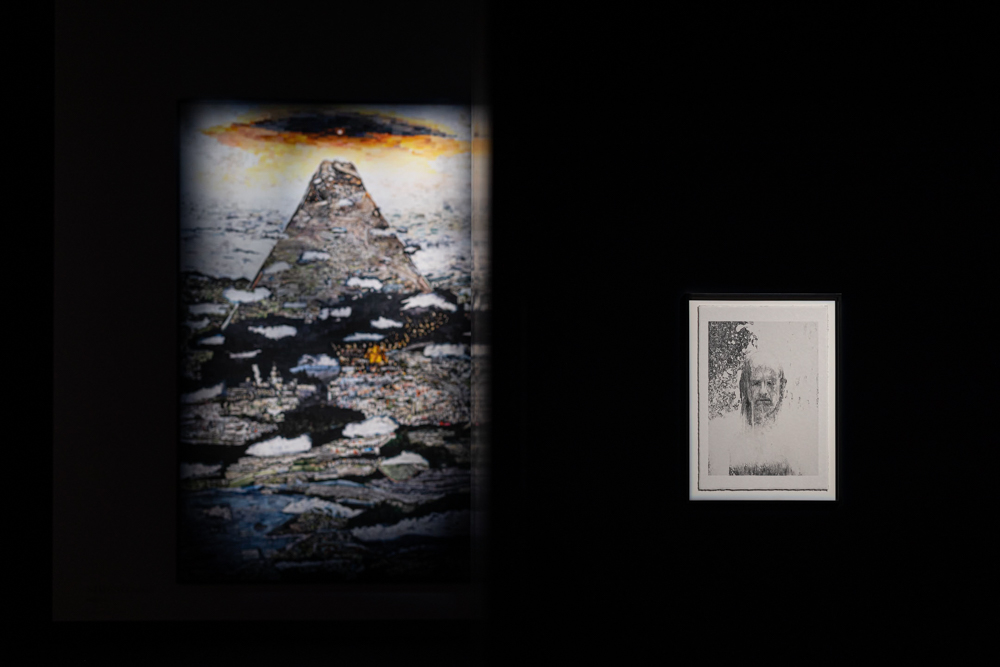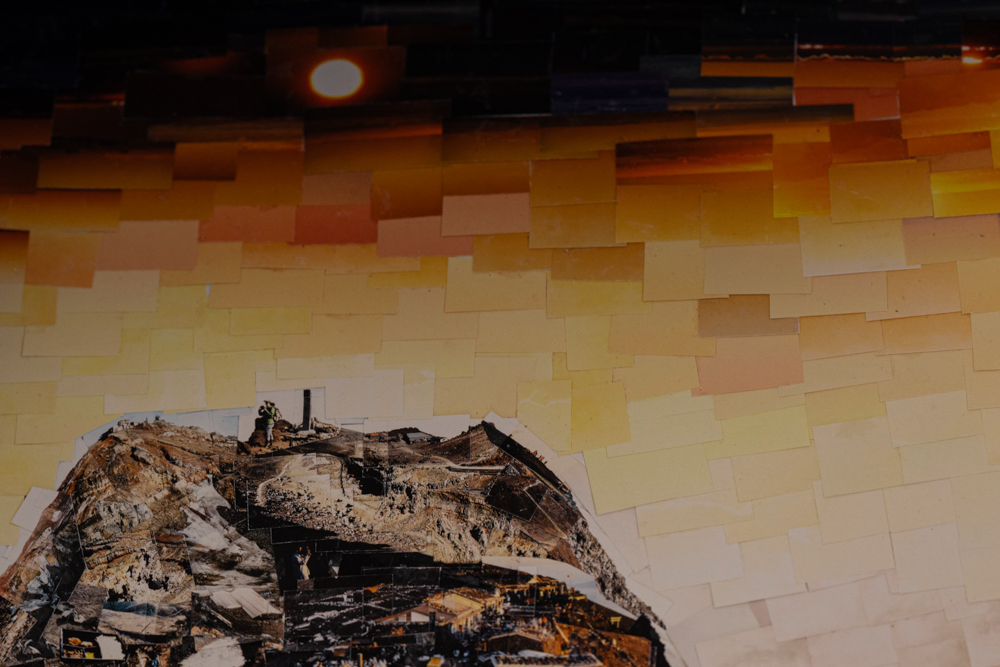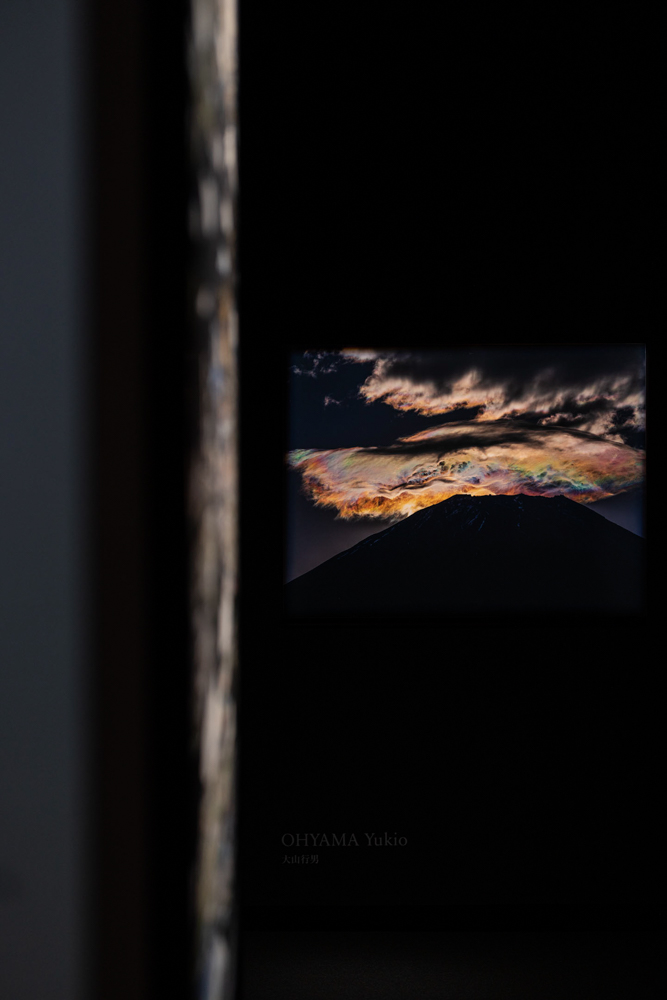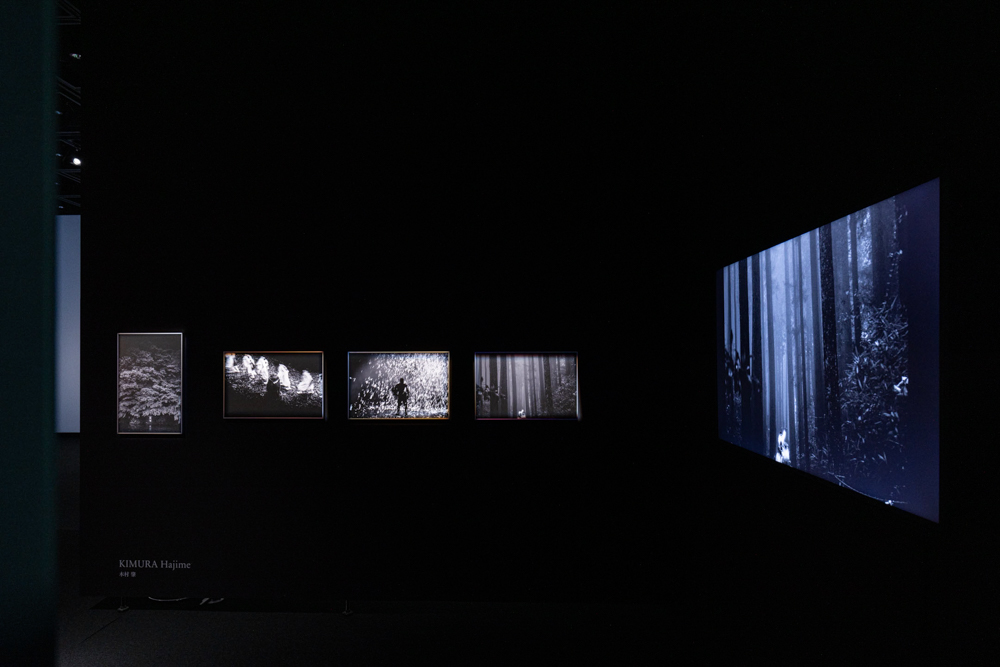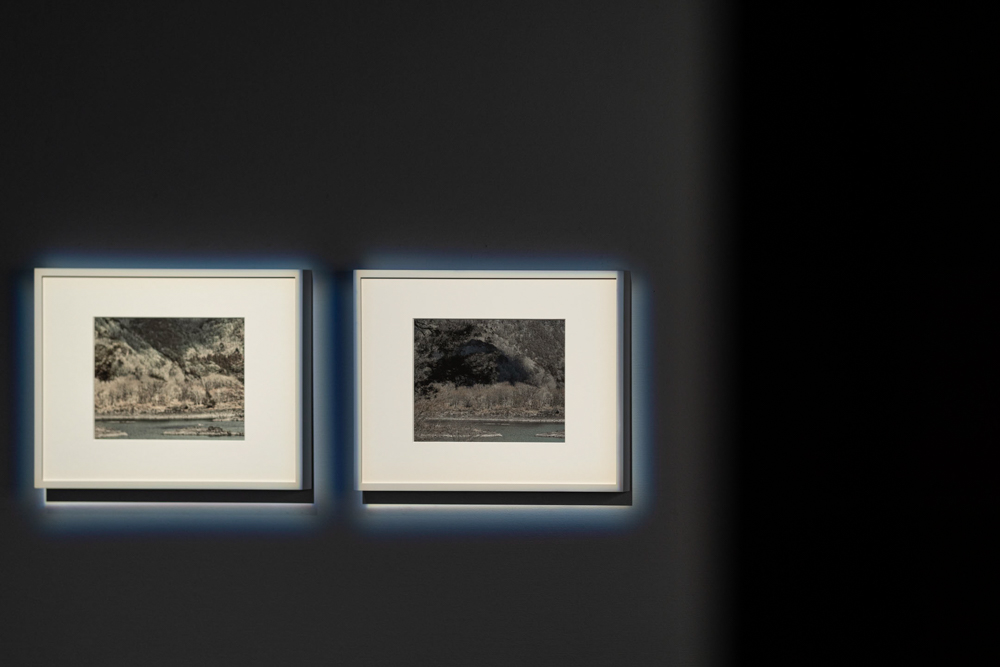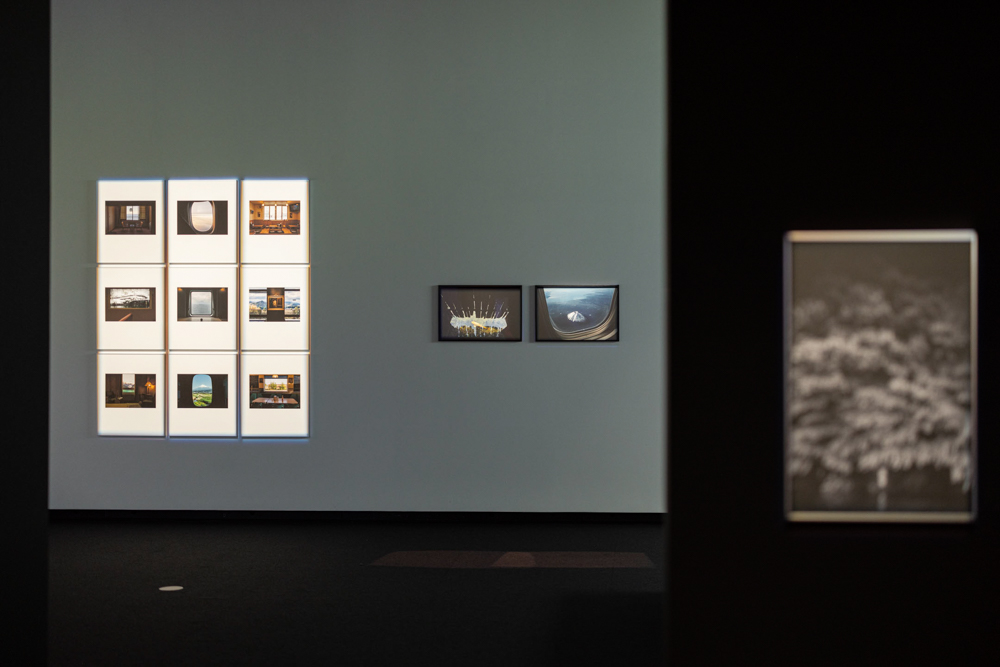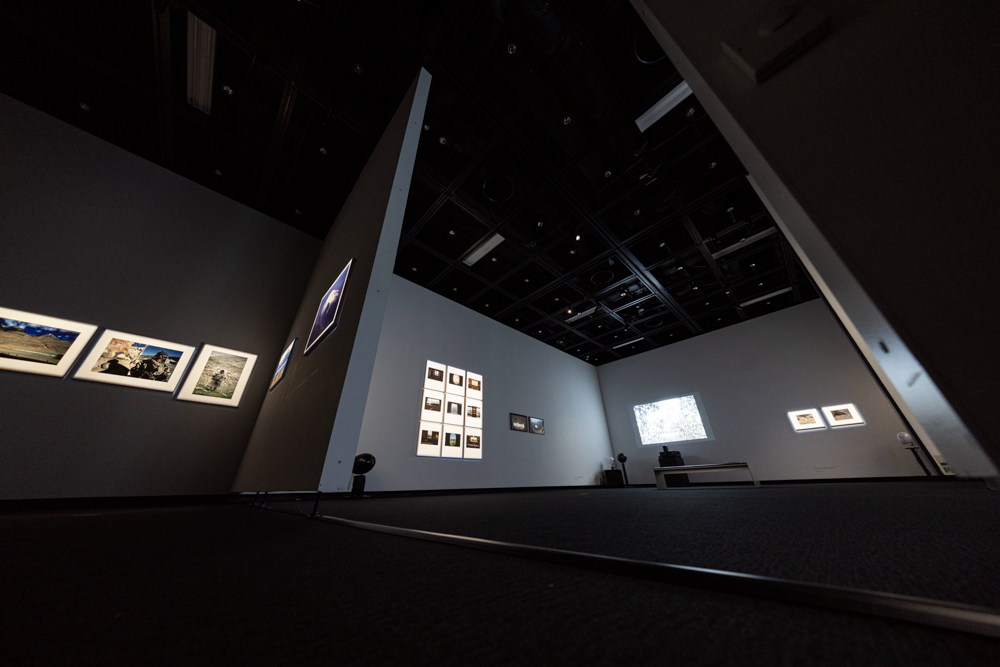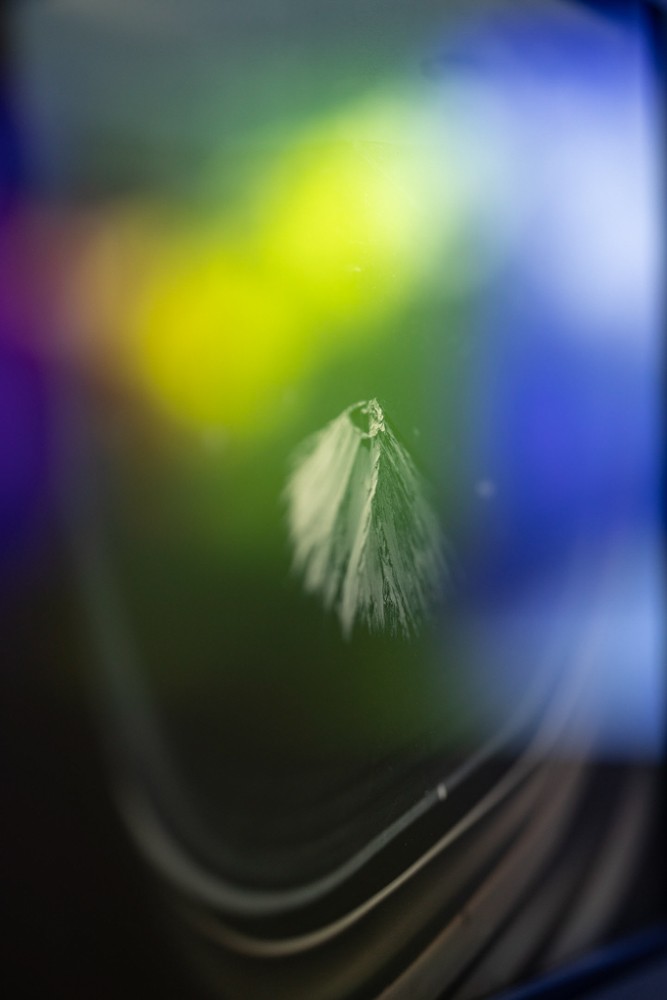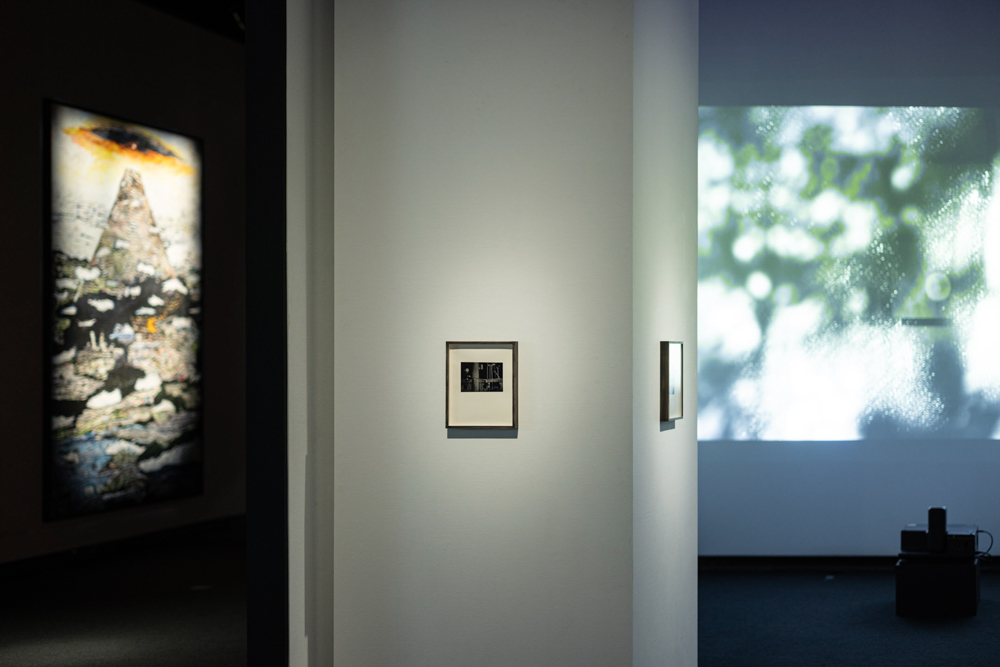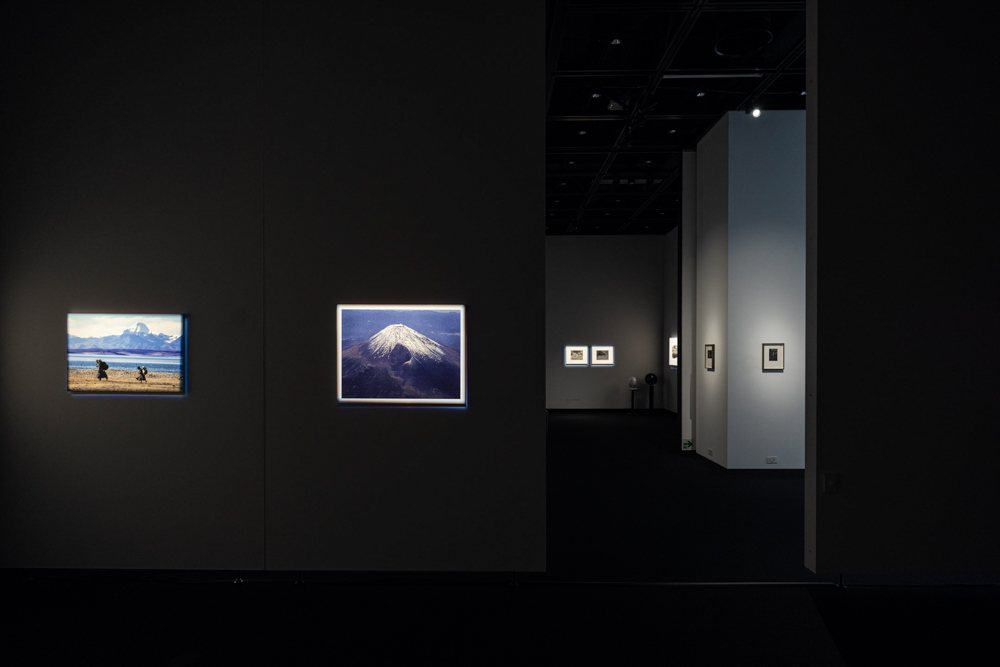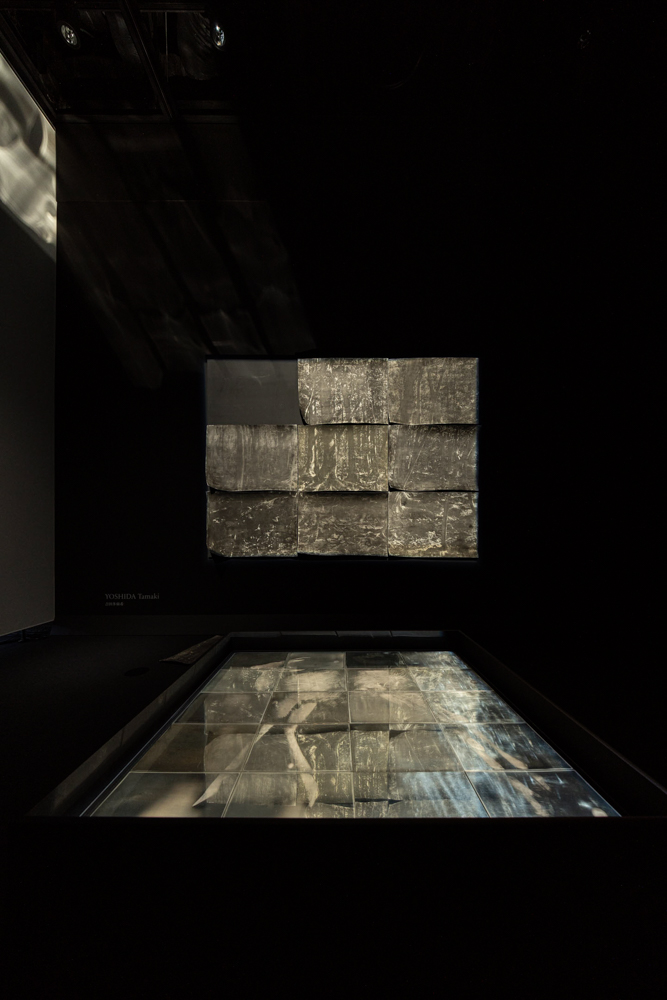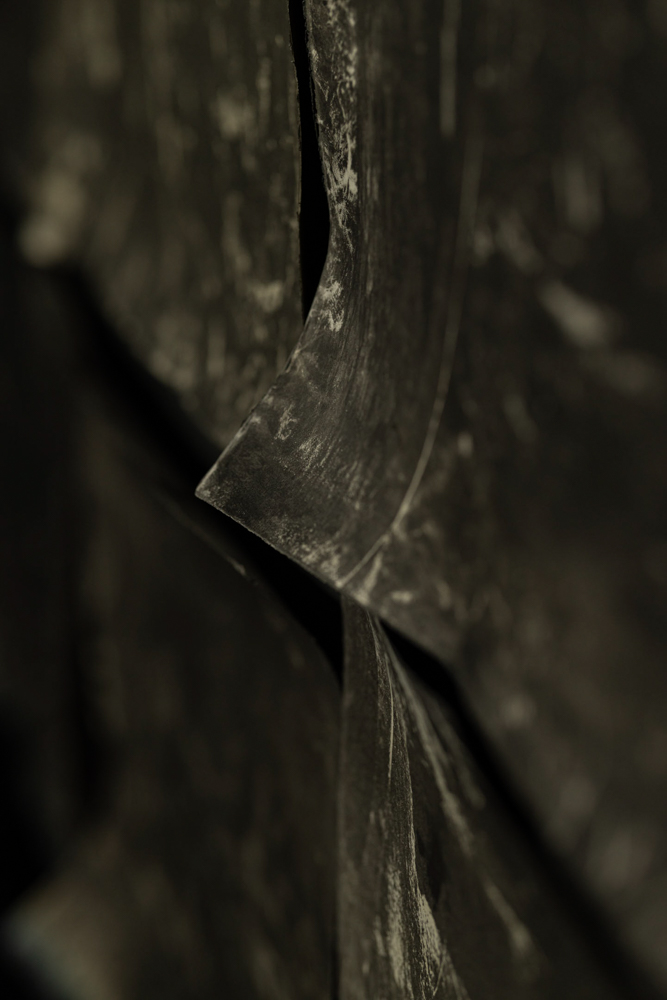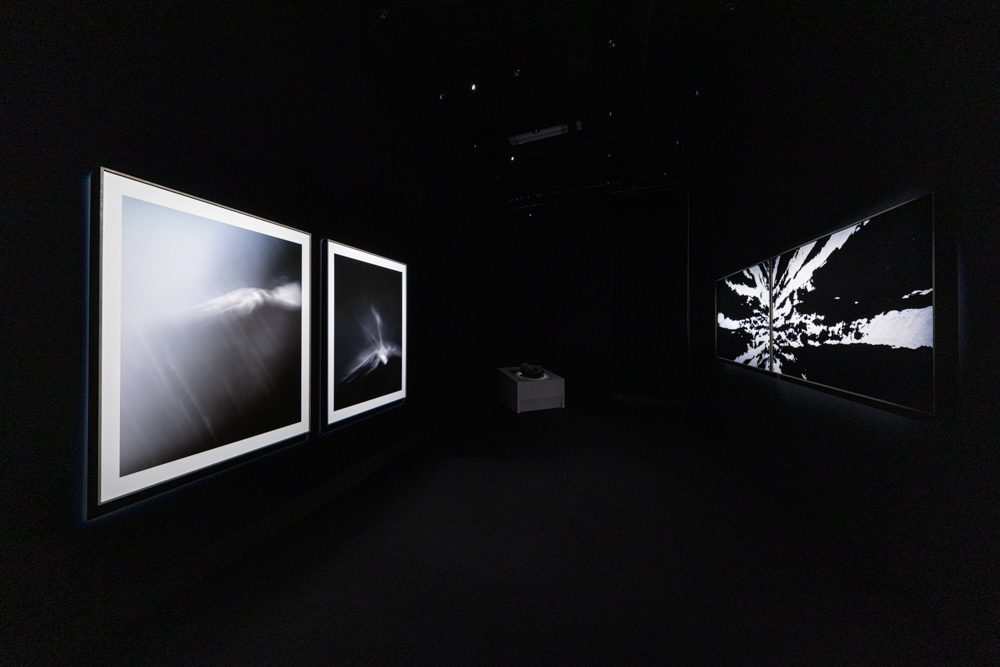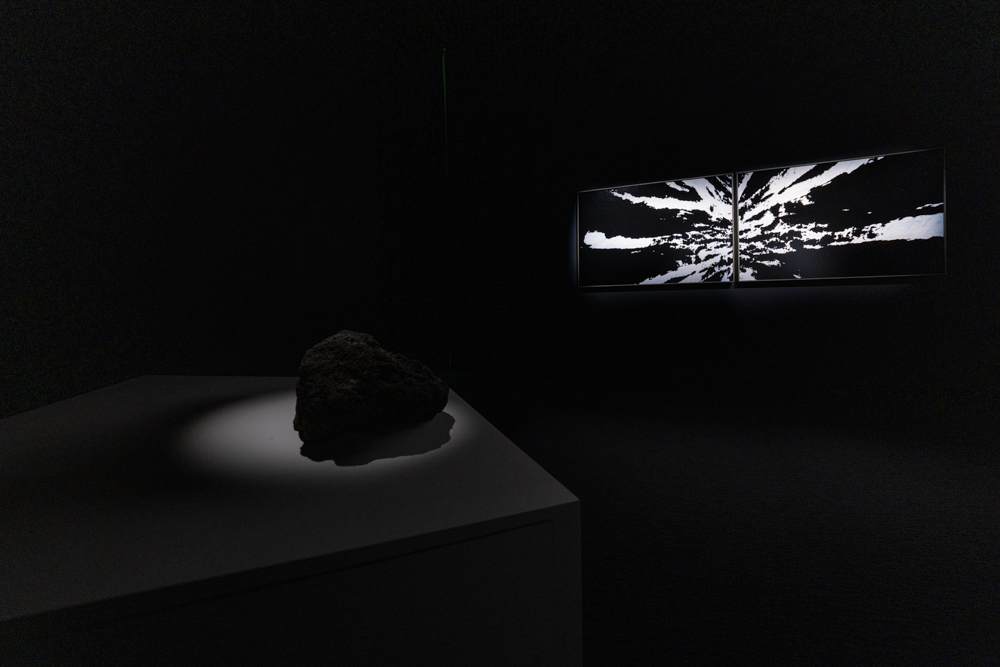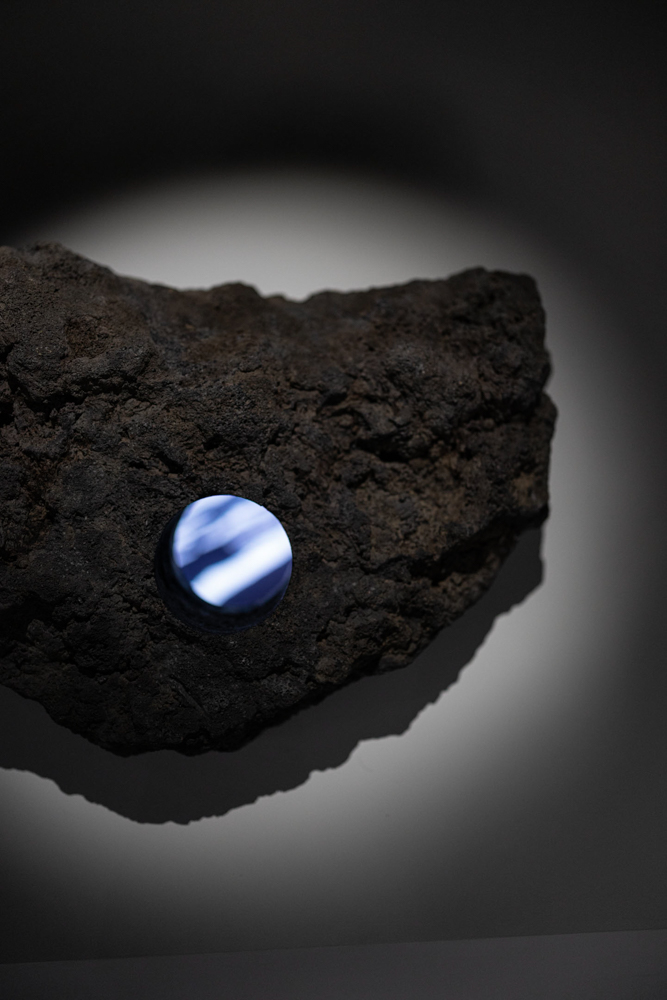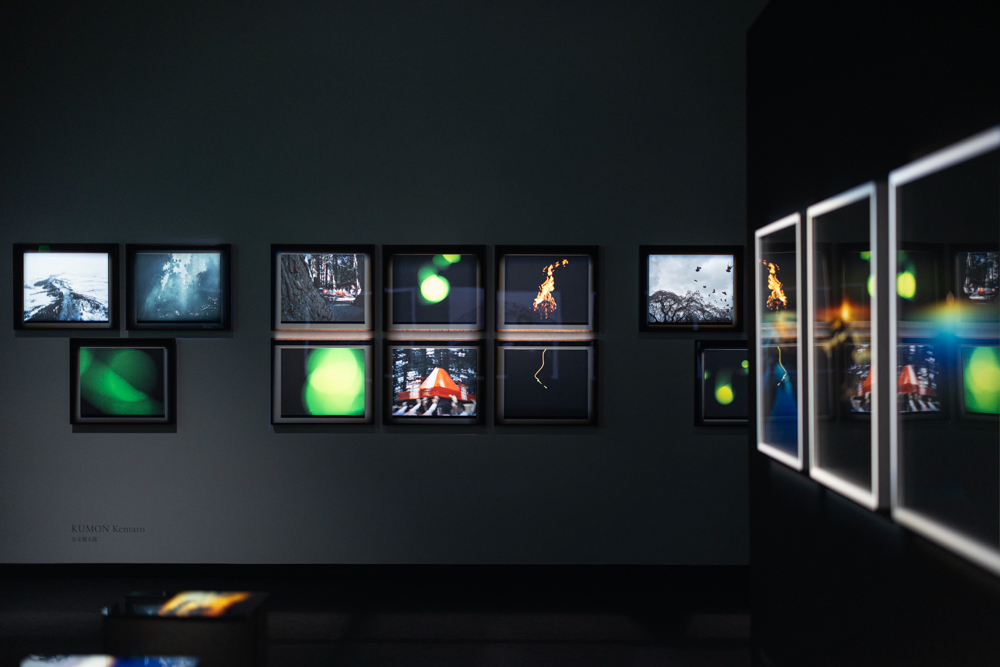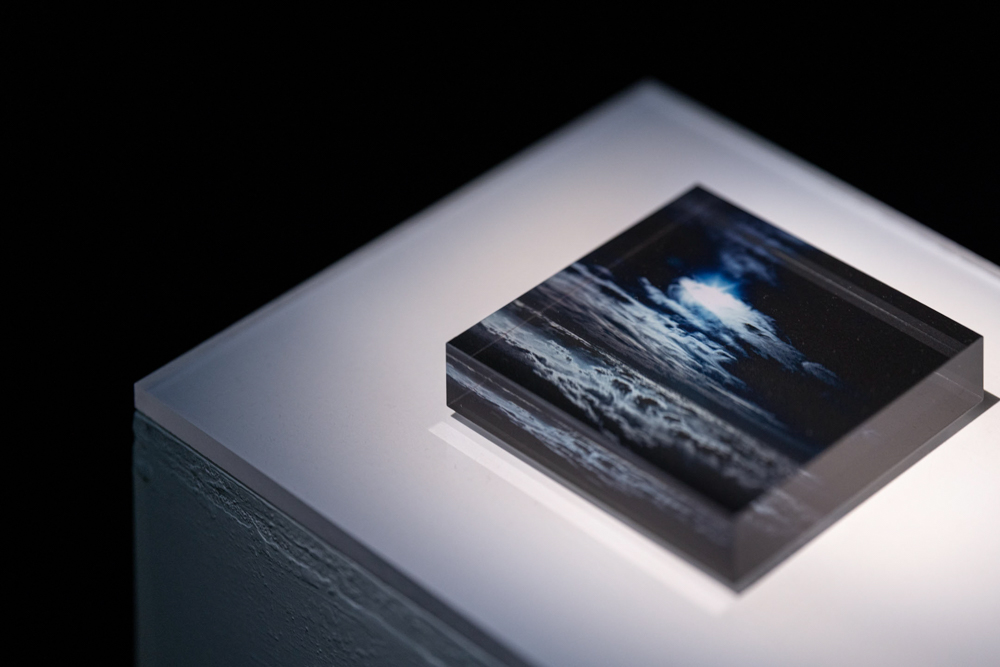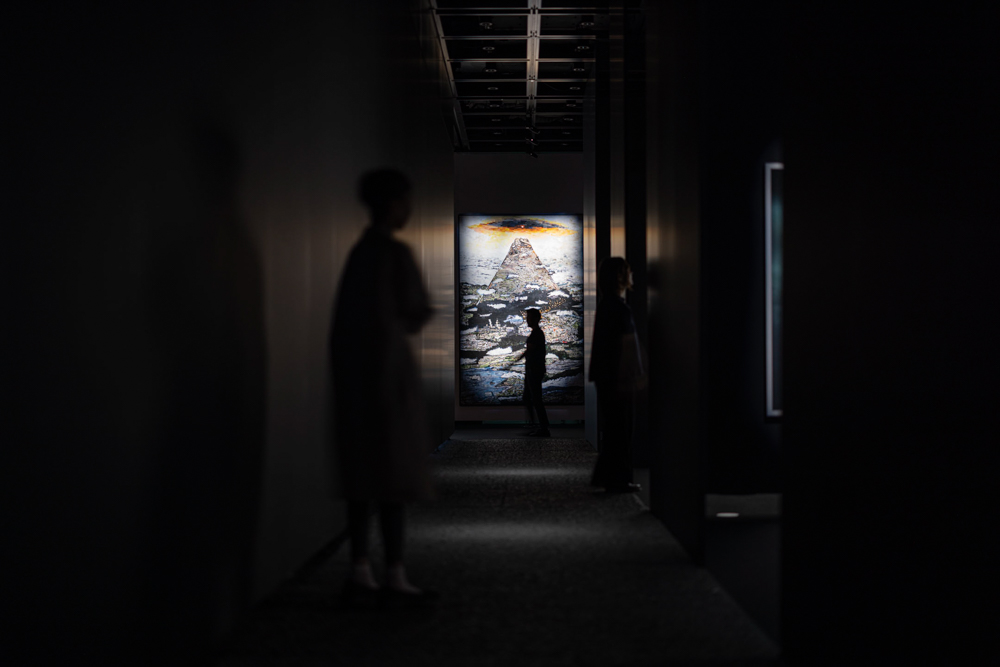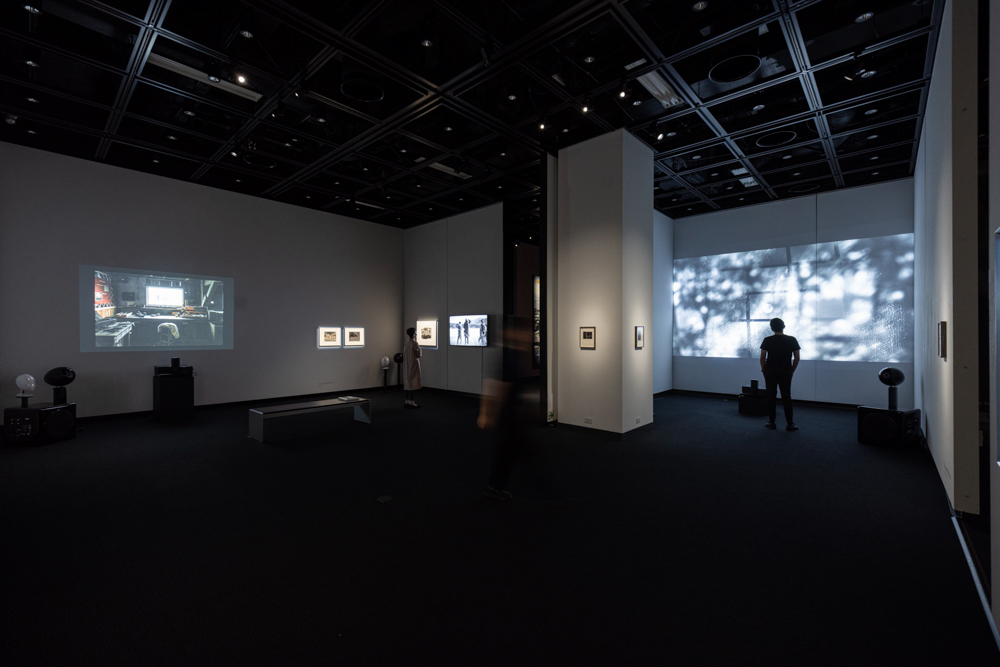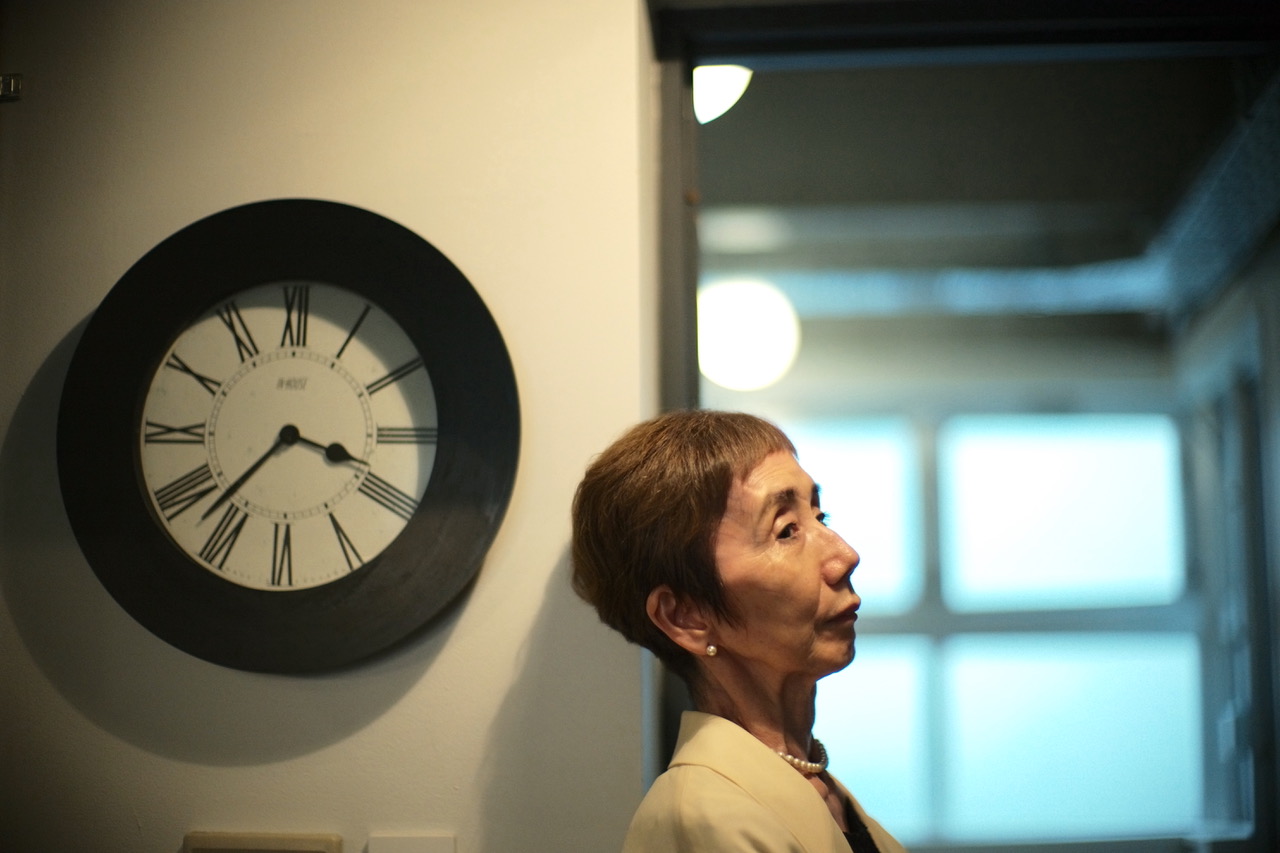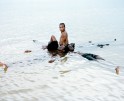George Nobechi in Conversation with Naoko Ohta: Wonder Mt. Fuji
A Conversation between George Nobechi and Naoko Ohta, Curator and Representative Director of Klee, Inc., on Photography’s Existential Crisis and its Potential, Working with Robert Frank, the State of Japanese Photography, and the Importance of the “WONDER Mt. FUJI” Project.
It’s summer in the largest city in the world and the heat and humidity outside are oppressive. Fashionably dressed women seek shade from the scorching sun under their parasols. The famed “salarymen” eschew their typical dark suits for polo shirts and slacks, but they still need hand towels to wipe the beads of sweat from their foreheads.
Inside the basement level of the Tokyo Photographic Art Museum, founded in 1995 as the Tokyo Metropolitan Museum of Photography, it is cool and dark. Ambient tones throb through the black walls like the distant heartbeats of a giant, sleeping creature. The only other sound is the crunching of visitors’ footsteps on a simulated gravel pathway. The works of eighteen photographers from throughout Japan and around the world shine like jewels in the dark chambers.
At the entrance, I bow slightly to the docent seated behind the ticket desk. I no longer need to announce myself as one of the exhibiting artists as she smiles back with knowing eyes from above her mask. Each time I enter this space, it feels like I am sliding into a dream – am I really sharing wall space between Coco Capitán and Sarah Moon? As I slink into my section of the exhibition space, I see that a dozen people have gathered to watch my “road movie” of stills, a journey from my fatherland, Canada to my motherland, Japan, and onward to Mt. Fuji. My eyes happen to meet a viewer’s. She has no idea that it is my work she has been seeing, but I get the sense that she didn’t dislike it. I don’t say a word, after all, it is a museum, not a gallery – one of Japan’s most important at that, and people are supposed to be quiet visitors, not active participants. I turn around to encounter a friendly, familiar face. It belongs to the curator, producer and visionary of this exhibition, Naoko Ohta. Just as her exhibition broke convention, so too has her career.
I had a rare opportunity to interview this force in Japanese photography – one the photography world at large should know about, and to do so from the perspective of someone who was on the inside of one of her most important projects to-date. I was witness to the risks she took, the difficult moments she faced and the small victories that gave her hope. I asked her some very tough questions and she answered them all with a forthrightness and honesty that renewed my admiration for Ohta-san.
Here is our conversation – raw and uncut – I hope you enjoy it as much as I did. Accompanying the interview are photographs taking you on a visual tour of the exhibition itself, presented as if you were touring the halls inside the museum.
Art and Risk
George Nobechi: One of my early photography teachers, Arno Rafael Minkkinen says, “Art is risk made visible” – you took a lot of risks – with the idea for the “WONDER Mt. FUJI” project, but also your personal finances, the installation, the design, the number of photographers you have to deal with—18, at one point 19— and also not displaying any captions in the exhibition space. What are your thoughts on the risks that you took? Why did you feel it was worthwhile to take so many risks?
Naoko Ohta: I believe that in any endeavor, only by taking risks can we reach new perceptions. Photography is in a very perilous situation right now; as we are approaching the 200th anniversary of its birth, its raison d’être is being shaken to its very foundations. It is a very meaningful act for someone to take the risk, show the reality of the situation, and make more people aware of it.
Today, the world is moving toward excessive fragmentation. This situation not only creates divisions among people, but also greatly hinders individuals from seeing things for what they really are. Art, including photography, which has contributed to the maturation and development of human beings, is a treasure chest for learning about the past, understanding the present, and sharing our hopes for the future. Given that we can only live for a limited amount of time, artistic expression has made it possible to share the wisdom and thoughts of others— we need art in our lives.
Moreover, for art to accumulate as nourishment for life in each individual, it is a prerequisite that the “receiving sensor” inside oneself functions properly. “WONDER”, which became the keyword for this project, is that receiving sensor— the soft emotions, empathy, surprise, delight, awe, doubt, hesitation— it is the intuition that everyone has in their hearts and minds as living beings.
I thought that in order to break through the current situation of the global environment and human society with complex issues and problems, we should start by making people aware of the existence of these feelings and becoming conscious of them, without being forced to do so by anyone.
Although photography is a latecomer to the field of artistic expression, it is a powerful art medium that has contributed to human cooperation over the past 200 years by improving the precision of human thought and memory. Through this exhibition, I hoped that viewers would experience anew an intense time of facing and contemplating photography.
In the pitch black darkness, the photographs were displayed where beams of light would shine upon them. The idea was that for each visitor, being in the venue would become a time to calmly but slowly awaken a sense that had been dormant within them as they contemplated each photograph.
We chose 18 photographers to participate in the exhibition because we wanted to showcase different approaches, providing the freedom for viewers to consider a greater number of possibilities, to feel a personal connection with one approach, and for them to start weaving their own stories and the choice to leap forward to the next stage of contemplation.
As I mentioned earlier, art is essential to life. With the advent of generative AI and virtual reality, I feel a great sense of crisis in a situation where many people have become comfortable in the values and controlled “choices” presented to them and have abandoned the ability to think things through on their own. I have an intuition that this sense of crisis I feel for photography, which I have come to love and learn important things from, overlaps with its decline.
So for all the visitors who would make the time to come to the museum to see “WONDER Mt. FUJI”, I staked everything I have, and I waited for them— not to persuade them with words, but to create an environment in which they could respond spontaneously to what they saw and felt. With the 200th anniversary of the birth of photography just around the corner, I felt that now was the right time to do so.
For me, this decision was certainly a very large risk. However, I could not realize this “reckless” challenge without the dedicated cooperation of the participating artists, designers and others involved.
Nobechi: You were subject to criticism with some of the risks taken. For example, from some people about the presentation. Why did you feel that in this era, having no captions was the way to go?
Ohta: The theme of this project was the awakening of emotions and senses. We thought that the environment should be one in which all of one’s senses and nerves are focused on reading the “message” from the visual rather than from written information and knowledge. The visitors are made to stand alone in the dark and think about the things they associate with the pictures in front of them without the noise of “words” from other people creeping into the narratives they were deciphering.
In this age of information overload, we wanted people to spend time in “unfriendly situations” where they are forced to ruminate over and over again, instead of things that are designed to be instantly recognizable, but at the same time instantly forgotten.
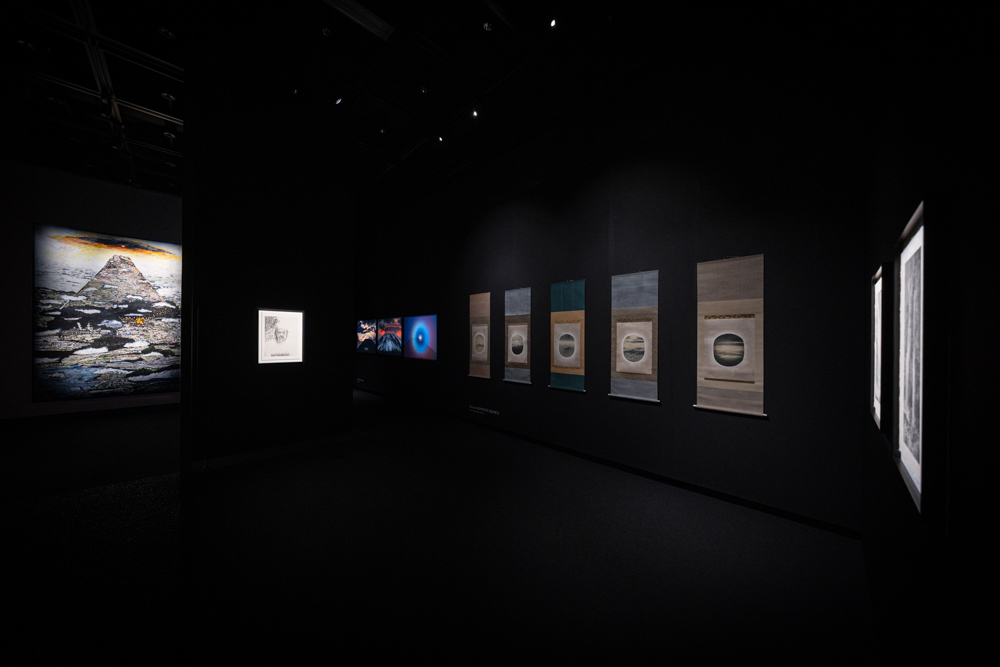
L: ©NISHINO Sohei, L2: ©Everett KENNEDY BROWN C/L: ©OHYAMA Yukio, C/R: ©Everett KENNEDY BROWN – ©MORIYAMA Masatomo / WONDER
Nobechi: You were also faced with difficulties in managing 18, 19 personalities. You had a photographer who was part of the project, who for personal principles, step down from the project. It was unfortunate, but we each must abide by our principles. But why was it important to have so many participating and how did you envision that all coming together?
Ohta: I thought it was important to show that even though there might be one unifying theme, there are more edgy answers, more varied interpretations possible than the simple “yes or no” choices that are the norm in modern society.
It was indeed a shock that a photographer withdrew from the project at the final stage, but I believe that “Wonder” has multiple meanings and that one of them includes his “getting lost” and that should be respected.
“WONDER Mt. FUJI”
Nobechi: Please explain “Why Mt. Fuji?” I think many participating photographers talked about how it’s such a difficult subject to ask professional artists to take on if it’s not their specialty, because a high amateur photographer who lives near the mountain will have far “better” photographs – different light, snow, weather, clouds – just more opportunities. However, Georges Braque said “out of limitations, new forms emerge” -is that part of your thinking?
Ohta: What makes a “good” photograph good?
Now that photo manipulation has become so easy that even many “photography fans” feel no sense of guilt or discomfort about manipulating photos to make them “good,” I wanted to ask two questions: “What is a photograph?” and “What is Mt. Fuji?”. We asked 18 photographers to present their thoughts on these two questions.
“Untitled” is the title given to more than half of contemporary art work, and although this is just my personal opinion, I have always thought that it makes viewers feel uneasy and confused.
In the “WONDER” project, rather than look down upon the viewer, saying: “Don’t you understand?”, I thought that the title should be specific enough to allow the viewer to stand in front of the work with confidence and engage in dialogue with it.
Of course, it is true that this was a very tricky subject for the participating photographers. As you pointed out, it is obvious that the longer you can stay near or with a subject, the more “shutter chances” you have to take a “good photograph.”
For better or worse, people’s mobility has become as free and easy as it is today, and it is no longer special to live in various places in the course of one’s life, both domestically and internationally. I think you can say that the world’s people have gone through a sort of “nomadization.” In such an era, the question of how to express Mt. Fuji, which is a “presence that represents the symbolization of Japan itself,” should have asked of each photographer to think deeply and make judgments from their own perspective.
“What should be in a photograph?” and how to photograph Mt. Fuji, arguably the most famous mountain in the world that everybody knows, became a theme that tested the photographers’ true worth. The 18 photographers responded to these questions in an outstanding manner.
Nobechi: Please talk about the “WONDER” aspect of this exhibition. What does it mean in this context, and why is it important such that it is next to “Mt. FUJI” in this exhibition?
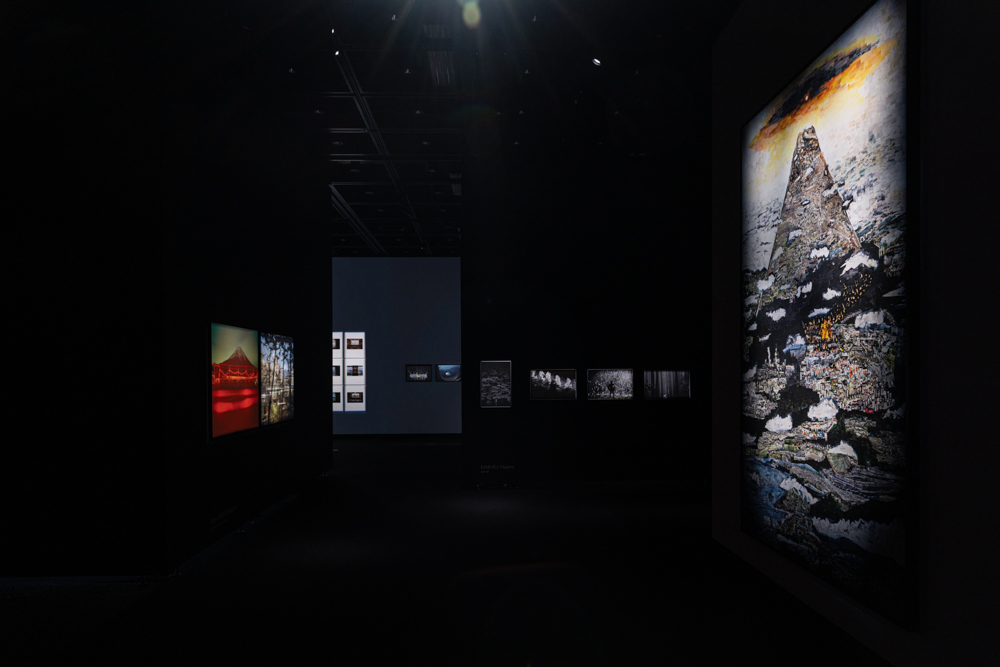
L: ©Chris STEELE-PERKINS, L/C: ©George NOBECHI, R/C: ©KIMURA Hajime, R: ©NISHINO Sohei – ©MORIYAMA Masatomo / WONDER
Ohta: As I mentioned previously, today we are facing many problems. To solve these problems at a fundamental level, we must find the “Sense of Wonder” within ourselves, as Rachel Carson suggested, and now is the time we must think and act as living beings on this Earth.
Photography has the power to record the wonder, splendor, and fear of the world, the joys, sorrows, pain, and anger of life, and to share them with the people of the world, reminding them of what is important, and guiding them. In the course of its development over the past 200 years, photography has boldly, calmly, and daringly captured the world, and has recorded “believable evidence” of human folly, cunning, wisdom, and integrity, as well as global environmental changes, for the future.
This time it is “WONDER Mt. FUJI”, and if the project continues to develop, we hope that it will bear a different theme, as “WONDER XXXXXXXX” in the future.
Nobechi: This is a project that you describe as an art project that is launched from and coming from Japan. Why is that important? Where do you hope it will go? What do you hope it will accomplish? Why does New York, Paris or London need to see this?
Ohta: Japan is an island nation in the Far East adjacent to the Eurasian continent. The country consists of about 14,000 islands, stretching north-south like a bow, and is blessed with abundant nature and a nurturing climate, which has allowed it to develop a distinct, gentle and rich culture and national character while being influenced by cultures from around the world.
(Japan’s relationship with) photography is a rare case globally in terms of its long history: in 1843, only 17 years after Niepce invented photography in 1826, Ueno Hikoma’s father, Toshiyuki, a merchant and interpreter, left a sketch of a daguerreotype camera brought to Dejima in Nagasaki (the central port for foreign trade during Japan’s isolationist Edo Period) by a Dutch ship.
In 1848, Shimazu Nariakira, the lord of the Satsuma domain, purchased photographic equipment. In 1861, Tamagawa Ukai opened Japan’s first photo studio in Yagenbori, Edo (now Higashi Nihonbashi, Tokyo). In other words, while European countries regarded Asia as their colonies and its natives as the subjects to be photographed, Japan was one of the first countries to master the art of photography and one of the few non-European countries to carve out photographic history alongside Western nations as the actors who were taking pictures.
Furthermore, it seems to me that Japan, a country with its own unique climate, culture, and national identity, has been supported by an aesthetic and philosophy that differs from Western photography in what it wishes to express through the medium of “photography”.
At a time when the meaning and value of photography are about to change drastically with the advent of generative AI and other technologies, I have a feeling that the ambiguity and aesthetics of photographic expression based on the land and the values of Japan have the potential to create new perceptions in the market-principles-and-efficiency-dominated global art scene.
Nobechi: How did you go about choosing the artists in this project? For example, I don’t think we associate Sarah Moon with Mt. Fuji…or Coco Capitán?
Ohta: When considering how to incorporate female photographers for this project, I had thought from the outset that we would select some who are active in the field of fashion photography.
If realism is the mainstay of photography, fashion photography is a field that stimulates a “desire for transformation” in people, where they wear a mask of fantasy and styling.
I was personally very interested in how these two artists, both of whom have held solo exhibitions in Japan, have a fondness for Japan, and are over 50 years apart in age, and both of whom came into fashion photography in different eras and through different backgrounds, would portray Japan and Mount Fuji.
Having known Sarah for more than 30 years, I had many discussions with her, and she provided me with valuable inspiration for the definition of the word “WONDER”.
Coco, on the other hand, was the first person I made contact with at the suggestion of the Maison Européenne de la Photographie (MEP)’s Simon Baker. Coco, as you may know, is a graduate of the Royal College of Art in London, and I have long kept an eye on the educational program of the RCA’s photography department. I have been friends with one of the school’s Tutors, Rut Blees Luxemburg, for ten years, but I have always been surprised by and impressed by her stance on advocating for open narratives and freedom of expression. So I had high expectations for what kind of work Coco would produce for this theme, and she responded in a wonderful way.
The Exhibition and its Impact
Nobechi: With all the difficulties that you faced, you were eventually able to bring everyone together, to put together a memorable exhibition. What are your thoughts on the potential legacy of this exhibition, in terms of what impact it may leave on Japanese photography?
Ohta: I think that we were able to establish some new guidelines in terms of what an exhibition space could be, the quality and sizes of the prints, the vision when it comes to exhibition planning and lighting, and the overall degree of completeness achieved.
We don’t even need to talk about the booming contemporary art scene to know that we are entering an era in which we are being asked to present “artwork” as “visible entities.” As you know, until now we have been limited to the level of evaluating photographs as individual “images,” but I feel that this is not sufficient to unleash the “power of photography.”
In Japan, the exhibition of photographic works has mainly been centered around manufacturer galleries. Each camera manufacturer has surrounded themselves with professional photographers, and by setting up galleries adjacent to their camera equipment showrooms and giving them the opportunity to exhibit their works, the photographers have become accustomed to this, and it is also true that visitors have tended to view the groups of works as if they were examples of lens work. At these manufacturer galleries, each photograph was accompanied by a title and the photographic data (lens, shutter speed, aperture, etc.). Also, because the galleries were all free to visit, it became an unspoken understanding that photographs were something you viewed for free, and not something you paid to see.
At “WONDER Mt. FUJI”, there were many repeat visitors who came to the venue multiple times. I think that the fact that there were people who appreciated the photographic space itself and who saw value in spending time in front of the prints may have left an impact on future venue design and exhibition management.
Nobechi: I think about 9,000 people saw the exhibition – a good number, but a little short of where we had hoped things would be – I think it’s fair to say. What are your thoughts on why that was and would you do anything differently, looking back on things, if you could.
Ohta: Honestly, the number of visitors was a shock to me. Even with so many renowned artists exhibited together, I have to accept the reality that the turnout was disappointingly low. The main reason for this is clear: the exhibition was not free.
On “Silver Day”, which is a day once a month when admission to the museum is free for people aged 65 and over, 80% of the visitors were senior citizens. Of course, we were happy that they came to see the exhibition, but we also felt that it was important to create exhibition content that would make people want to come even if there was an admission fee, and to come up with a PR strategy that would reach a wide range of art fans.
I think that there is a need to enrich exhibitions in a multilayered way, such as by holding talk sessions, gallery tours and artist visits to meet the interests of viewers.
On Naoko Ohta’s Background and on Robert Frank
Nobechi: Please tell us a little bit about your background in photography. I know you used to work in the airline industry, spent time in France. But I also know you spent some time with Robert Frank. This year is the 100th anniversary of his birth. What was your time with him like? And, did you see any photographers in this exhibition who embody his spirit when it comes to photography, who maybe carry on his legacy?
Ohta: I majored in art history in college, and I was interested in photography as a branch of art, but to be honest, I did not really like the “slippery texture” of photography. However, I began to feel that photography was an extension of the works of the Pre-Raphaelites and Andrew Wyeth’s paintings which fascinated me, and gradually I picked up many photo books and became passionate about this medium, which inscribes time and space that actually existed in the real world.
I was living in France at the time, but I became involved as a core member of the “New Cosmos of Photography” (sponsored by Canon, Inc.), which was established in 1991 to discover, nurture, and support new photographers. I participated in this project as a coordinator for more than ten years. I was able to observe the environment and criteria for evaluating photography from both Japan and France.
Two years after the launch of the “New Cosmos of Photography,” I began to feel a sense of discomfort with its direction, where there were only Japanese jurors and the industry’s unique familiarity with each other determined the Excellence Awards. So I proposed the introduction of a guest jury system to the main sponsor, which they approved, and we invited Robert Frank as the first guest juror. After that, I was given the responsibility of inviting and working with Sarah Moon & Robert Delpire, Jean-Claude Lemagny, Marc Riboud, Bernard Faucon, Martin Parr, and others, and of running workshops and talk sessions, giving me the chance to interact directly with people who were active in the global photography world.
However, the time I spent with Frank was a special time that changed my life.
Frank invited me to many “epicenters” of the world’s unfairness, the philosophy of a Market Economy, Truth and Justice, and the realities of the environment surrounding his photography, while at the same time explaining in letters and with words the reasons why he made photographs. The conversations we had in various settings, from a formal dinner at a patron’s mansion during one of his exhibitions, to his home in New York, and the 50 letters we exchanged, had a major impact on the core of this “WONDER” project.
“Let’s be friends first. We’ll think about whether or not to work together after we become friends.” For me, these words are still the first condition that has to be met when I think about casting new project members.
I met the artist who would carry on his legacy in February of this year, at a time when preparations for “WONDER Mt. FUJI” were approaching the final stage. I came across a work that was full of the poetry that Frank cherished in the time and scenery of his life. It was the exhibition “YA・MA・BI・KO (Echo)” by George Nobechi.
The gentle sadness and resignation, the transparent sense of loneliness, and the straightforward gaze of his works, which could be described as “road movies,” would surely speak directly to visitors to the exhibition and make them think about the question: “What is photography?” Fully aware that there was almost no time for him to prepare, I proposed that he make a road movie of his stills in addition to displaying his prints, and fortunately he agreed.
What Comes Next?
Nobechi: What is next for “WONDER Mt. FUJI” and what is next for you, given how much you have poured into this? Was it worth what you invested personally, socially, and financially, too, which has obviously been a difficult aspect? But why was it so important and what is next?
Ohta: Everyone must think about the meaning of their own life. “Why was I born into this world?” “Why am I who I am?” Since the 2020 coronavirus pandemic, I have been thinking more about the meaning of my own birth and my own mission. In this world full of absurdity, I could not help but think about how I have spent a rich time through art, including photography, about the dignity of being human, and how I have been blessed with unexpected wonderful encounters.
The planet is currently facing many problems — climate change, war, inequality, discrimination, prejudice and abuse — if there is a channel to solve these problems, it is probably not through politics or economics, but through art. As a form of communication that welcomes multiple “right” answers, I think that art can bring about mutual understanding and harmony in a divided society.
We need to adopt means of communication that promote a change in community awareness, emotional awakening, and lifestyle change into our daily lives without hurting the pride or self-esteem of others.
As we approach the 200th anniversary of the birth of photography, there are currently awards and projects underway around the world that aim to build a sustainable society through the harmony of humans and nature.
‘WONDER Mt. FUJI’ is one such project. It is the first of its kind to be launched in Japan, and is a signal of a new era in photography. I have put all my energy into this project. From here on, I hope to work with the people who have seen this project and move forward together.
I am very satisfied with the development and results of this project, which I never gave up and continued to aim for greater heights until the very end. For example, after securing Mr. Nobechi’s participation, who met the challenges with the highest level of synchronicity, I turned my attention to the idea of a sound installation in the venue, and I was able to realize this in just over two weeks, bringing the great maestro Seigen Ono on board for the sound design. However, I am disappointed that I did not have the energy left to better promote the project, as the speed and depth of the content’s evolution accelerated at an unprecedented pace, and I deeply regret my own lack of ability.
Nobechi: On the final day of the final weekend, US Ambassador to Japan, Rahm Emmanuel and his wife, Amy Rule visited the exhibition. It was a coincidence – they did not seek out the exhibition specifically, it was on their day off, but it clearly resonated with them. What does that mean to you and what potential do you see from their response?
Ohta: Miracles and good fortune have a way of suddenly appearing at the end of many cumulative days of repetitive, mundane work. On the final day of the exhibition, I was delighted to be able to show the two of them around the “WONDER Mt. FUJI” venue, which they chose as a place to spend some precious private time together on a Sunday in the heat of the summer. It was a great reminder that museums are places where people from all walks of life may visit without warning.
In order to further develop the “WONDER” project in the future, it is important to connect the baton with one small miracle after another. The line between the impossible and the possible is paper-thin, and in order to cross that line, it is important to have a positive mindset that connects miracles.
In order to turn this chance encounter into a necessity, I would like to think about and act on the idea of further strengthening the “WONDER” message, which feels like it is capable of transcending great distances.
On Japanese Photography and its Standing in the World
Nobechi: That brings me to one final, important subject. What is the place of Japanese photography in this world? It has obviously played a vital role in the history of photography, but among the most famous photographers in history, maybe only a few have cracked into the canon of the best-known photographers— for example, Frank, Cartier-Bresson, Arbus, Lange, Adams, Avedon, Penn, Friedlander, etc. and only recently are people talking about the likes of Moriyama, or perhaps in the current era, Sugimoto, and a few others. This year, of course, Arles had a feature on Japanese women photographers, for example, Kawauchi and Ishiuchi.
My mentor Sam Abell has this year been inducted into the International Photography Hall of Fame, but when I looked up the other inductees, aside from American-trained fashion photographer Hiro, it is devoid of Japanese photographers, Asian photographers. It is American and European centric, perhaps a handful of Latin American photographers as well. To me, it’s not “international” if it doesn’t include the greats of Japan, and other Asian nations. There is still a prevailing Euro-American centric view of photography. When will the world treat Japanese and Asian photography with the kind of respect it deserves?
And this brings me to the question about contemporary Japanese photographers. Aside from some of the bigger names that are perhaps finally being recognized, what about the contemporary Japanese photographers of today? What do you think they are doing vs other contemporaries in Europe and Americas, but also other parts of Asia?
I feel that photographers from other Asian countries are making very interesting and risky photographs. I recently had the opportunity to be a juror for Photolucida’s “Critical Mass” and found that photographers from places like Korea and China were making very interesting work. Japanese photographers’ work was not as edgy – I include myself in that—we need to take more risks, but what are your thoughts on that? What do Japanese photographers do well, what do they not do well? And why should the world pay attention to them?
Ohta: Unfortunately, I cannot say that the reputation of Japanese photographers in the world is well-established.
However, photographers such as Eikoh Hosoe, Shomei Tomatsu, Ken Domon, Kikuji Kawada, Masahisa Fukase, Yasuhiro Ishimoto, Shoji Ueda and Nobuyoshi Araki have produced works that are truly remarkable.
After World War II, despite being a defeated country, Japan challenged itself to new forms of photographic expression and expanded its expressive territory. However, it is a fact that their works had extremely few opportunities to access the international art scene due to the language barrier and the lack of coordinators familiar with both Western and Eastern environments.
In the current situation, Sugimoto in the US, Moriyama, Kawauchi and Ishiuchi in Europe – all of them have been featured by Western curators and photography editors in a one-off manner (what in Japan is likened to line-caught large tuna— prized, but standalone), and it feels like they have been incorporated into a world photography map based on Western standards.
The publication of The History of Japanese Photography by Anne Wilkes Tucker, published by Yale University Press in 2003, was a major turning point for the awareness of Japanese photography, as it marked the first time that Japanese photography became the subject of research at an American university, and it was a great achievement that led to the global emergence of English-language books that dealt specifically with Japanese photography as a subject.
In order for the appreciation of Japanese and Asian photography to grow in the future, it will probably take some time and a lot of criticism and research. Now that the emergence of generative AI and virtual reality is once again raising the question of “what is photography?”, I feel that the day is not far off when new narrative and quality evaluation criteria will be debated on an equal footing for photography from Europe, the US, Japan, Asia and the BRICS countries.
I think you touched on the biggest problem for Japanese photographers, which is risk-aversion, but it may also be related to the distinctive form of self-esteem and national character that comes from living in an island nation with a long and unique history. In the Japanese photography world, there is a persistent “My Story”-like approach that is characterized by a lack of interest in world affairs and a tendency to limit the subject of photography to events in one’s own immediate surroundings, rather than trying to share commonalities with the world at large. In other words, photographers are content to remain in the safe confines of expressions that can be understood without explanation through a kind of unspoken understanding.
The attitude of resigning oneself to defeat, thinking “I’m not going to be able to communicate with the world anyway,” is the biggest problem with Japanese photography.
Japanese artists who are overly concerned about not being too different from others (a national cultural tendency) can create calm, ambiguous, and seemingly mysterious expressions, but it is clear that they will end up leaving a mediocre impression that feels familiar.
Japanese photographers should take more risks based on the aesthetics and beliefs unique to Japan.
I am currently promoting the “Two Mountains Photography Project” with Malaysian and Japanese photographers, which focuses on Mount Kinabalu, a UNESCO World Natural Heritage site on the island of Borneo in Malaysia, and Mount Fuji, a UNESCO World Cultural Heritage site.
It started in 2013, and next year, an exhibition will be held at the Sabah Art Gallery as “TM4.0”. In order for Asian artists to gain the attention of the world, it will be important not only to create works that expand our horizons, encourage new ways of thinking about the issues that the world expects photography to address, and influence people’s guidelines for action, but also to launch common projects that transcend national borders. Using the “TM” Project as an example, the spirituality and values of the Asian world can be seen by continuously photographing over a long period of time and having multiple photographers bring fresh voices by taking turns in participating. I think it is important to persistently continue with such activities in order to reach more breakthroughs.
Final Thoughts
Nobechi: Thank you for taking the time to answer my questions in such detail. Please leave us with your final thoughts, hopes and ideas for the readers of Lenscratch to take away from this conversation.
Ohta: I think that the value and meaning of a photograph deepens depending on how the viewer responds to the photographer’s questions. I sincerely hope that there will be more real-life scenes where the photographer and viewer actually have a conversation, with the photograph placed in the center. I think that the various messages contained in the condensed time of a single point are often things that even the photographer themselves are not aware of. Therefore, the echoes of the viewers make the work grow into a stronger, more certain “artistic expression worth believing in”.
“WONDER Mt. FUJI” Official YouTube Channel
Participating Photographers:
YAMAUCHI Yu Instagram: @yu__yamauchi
HIROKAWA Taishi Instagram: @aishihirokawa
KUMON Kentaro Instagram: @kkumon
JUMONJI Bishin Instagram: @bishinjumonjigallery
Yulia SKOGOREVA Instagram: @yuliasko.ph
KIMURA Hajime Instagram: @hajimekimura
Everett KENNEDY BROWN Instagram: @everettkennedybrown
NISHINO Sohei Instagram: @sohei_nishino
OHYAMA Yukio Instagram: @yukio.info
Chris STEELE-PERKINS Instagram: @steeleperkins
Sarah MOON Instagram: @sarahmoon_official
Coco CAPITAN Instagram: @cococapitan
Donata WENDERS Instagram: @donata_wenders
George NOBECHI Instagram: @georgenobechi
YOSHIDA Tamaki Instagram: @tamakiyoshida
SUGAWARA Ichigo Instagram: @ichigosugawara
TAKIMOTO Mikiya Instagram: @missbeann
Sound Design | Seigen ONO
Graphic & Space Design | WATABE Tomohiro & HIRAWATA Hisaaki (MOMENT)
Lighting & Constraction | Aquila
Author’s note: This interview was conducted entirely in Japanese and translated into English by me – a few contextual notes about Japanese history and culture were added by me (denoted in parentheses) ; otherwise, the entirety of the words comes uncut and unfiltered from Naoko Ohta.
The Curator: Naoko OHTA
Representative Director, KLEE INC.
Founder / Representative Director / Chief Curator, NPO TOKYO-GA
Chief Editor of ecobeing, an environmental website
Commissioner / Chief Curator of “WONDER Mt. FUJI
Born in Tokyo. Graduated from Waseda University, Faculty of Letters I, Department of Art History. After graduation, studied in Cambridge (UK), focusing on Pre-Raphaelite painting and the history of photography in its early era. In 1979, joined Air France and lived in Paris until 1983. After returning to Japan, became Executive Secretary of the Japanese Council for Medical Training Program (JCMTP), being in charge of training programs for young doctors from ASEAN countries under Ministry of Economy, Trade and Industry, In 1987, established KLEE INC, focusing on the global cultural exchange and international art program.
The number of exhibitions she has curated in Japan and overseas to date exceeds 200. In recent years, has been deeply involved in projects that contribute to the creation of new value in society through photography.
2011 “Japanesque Modern” at Tokyo and London
2013 L’art de Rosanjin” at Guimet Museum, Paris
Goal to have Japanese cuisine registered as an intangible cultural heritage by UNESCO
2018 TOKYO CURIOSITY Paris
Official program of Japonismes 2018 at Paris
2019 TOKYO CURIOSITY BERLIN
Official program of 25th anniversary of the establishment of a sister city relationship
between Tokyo and Berlin
2020 TOKYO CURIOSITY 2020
A part of the official program to build momentum for the Tokyo Olympics (2020) | Space Design & Publication Awards |
2000 “In-Ei Raisan (Praise for Shadow)” Exhibition Catalogue /
National Catalogue & Poster Exhibition / Encouragement Award, Japan Institute of Printing and Publication
2009 “Japanesque Modern” at JAPANTEX
Space Design, DDA (Japan Display Design Association) Award
2013 “L’art de Rosanjin” Exhibition at Musée Guimet, Paris France
DSA (Japan Space Design Association) Excellence Award
2021 “TOKYO CURIOSITY 2018-2020 PARIS-BERLIN-TOKYO
The 62nd National Catalogue Exhibition, Japan Chamber of Commerce and Industry President Award
Silver Award in the catalogue category
2022 Received the International Award from the Photographic Society of Japan
Nominator | PRIX PICTET AWARD / The Leica Oscar Barnack Award
Jury | The Photographic Society of Japan Award
The Author: George NOBECHI
Photographer, Nobechi Creative Director, Karuizawa Foto Fest Creative Director
Instagram: @georgenobechi
Email with comments, questions: george@nobechicreative.com
George Nobechi‘s work is often described as evoking solitude, duality and longing. As a bicultural Japanese/Canadian he is simultaneously an insider and outsider in both Eastern and Western cultures and this is reflected in his sensibility and vision.
Nobechi was born in Tokyo to a Canadian father and Japanese mother. His Japanese grandfather, a high school teacher on the northern island of Hokkaido, was his role model and nurtured a thirst for knowledge across the arts, science and history. Those influences remained with Nobechi as his family moved to Canada when he was eleven. During his studies at the University of British Columbia in Vancouver, his father suddenly died, and upon graduation with an Honors Degree in History and International Relations in 2002, Nobechi entered the world of Finance, first in Tokyo and later in New York.
Along the way, Nobechi began to feel disconnected from life and embarked on solo round-the-world journeys in 2008 and 2010 in order to try to cross that void. In 2014 while living in New York, he was inspired by the Photoville photo festival and decided to walk away from his career. He placed his belongings in storage, gave up the lease on his apartment, and traveled to the Southwestern US to study photography, first under Brett L. Erickson, and continuing as an intern at the Santa Fe Photographic Workshops in 2015, where he met the National Geographic photographer Sam Abell. Abell identified the potential in Nobechi and suggested he pursue a career in photography. What followed was a three-year journey with no fixed home. As the months and years passed, Nobechi felt a beckoning from his homeland and he returned to rediscover Japan from his newfound perspective as a photographer.
Since 2020 he has been involved in community and philanthropic work, creating the series Evenings with the Masters©, which showcases international master photographers and raises funds for charity; to date, he has interviewed 36 photographers such as Pete Souza, Michael Kenna, Jane Evelyn Atwood, Arno Rafael Minkkinen, Mona Kuhn, Awosika van der Molen, Greg Gorman, Kate Breakey, raising over $70,000 for charity.
In 2022, Nobechi was chosen to represent Japan in the Fujifilm documentary series “Reflections.” In 2023, he co-founded Karuizawa Foto Fest, a new developmental ground for photographers from around the world. He remains Creative Director of KFF.
Awards, Galleries, Exhibitions, Publications, Collections Highlights
Gallery representation: Nobechi is currently represented by Patricia Conde Galeria (Mexico) and the Webster Collection (Santa Fe, NM) and was formerly represented by A Gallery for Fine Photography (New Orleans)
Solo exhibitions: Recent solo shows include “Roads to Denali” FUJIFILM Square Tokyo 2023, “The Japan I Hadn’t Seen” FotoNostrum, Barcelona 2023, “Phoenix Rises” Hiroshi Senju Museum Karuizawa 2023, “Eastern Light, Western Wind” Frederick Harris Gallery Tokyo 2023 and Photoville New York 2020.
Collections: Nobechi’s work is included in the collections of the Center for Creative Photography, Tucson, Detroit Center for Contemporary Photography and the Australian Museum of Contemporary Photography.
Publications: Nobechi’s photographs and words have been published in Huffington Post, Newsweek Japan, Fuji Koron, Tokyo Shimbun, PDN, Lenscratch, Dodho, Fraction, Asahi Camera & Vostok
Awards: Highlights include: Critical Mass Top 50 (2017, 2021), Critical Mass Finalist (2016, 2017, 2020, 2021, 2023) Rfotofolio winner 2018, Review Santa Fe selection 2018, PX3 Paris Photo Prize Silver for monograph and fine art categories 2017, International Photo Awards Bronze winner series 2018, PDN’s The Curator Award best landscape series 2017, Phoenix Art Museum’s Sidney Zuber Award Honorable Mention 2017, SilverEye Center for Photography’s Commendation Award 2017, PRC Boston’s Exposure Award 2017. PX3 State of the World Curator Selection Winner 2020, Rfotofolio Merit Award winner 2020, Kolga-Tbilisi Photo Festival Best Single Shot 2020 Finalist. Also a World Press Photo 6×6 Asia Shortlist nominee in 2020 and PDN 30 Nominee in 2018.
Instagram: @georgenobechi
Posts on Lenscratch may not be reproduced without the permission of the Lenscratch staff and the photographer.
Recommended
-
Arnold Newman Prize: C. Rose Smith: Scenes of Self: Redressing PatriarchyNovember 24th, 2025
-
The Aline Smithson Next Generation Award: Emilene OrozcoNovember 21st, 2025
-
MATERNAL LEGACIES: OUR MOTHERS OURSELVES EXHIBITIONNovember 20th, 2025
-
Josh Aronson: Florida BoysNovember 1st, 2025
-
Robert Rauschenberg at Gemini G.E.LOctober 18th, 2025

